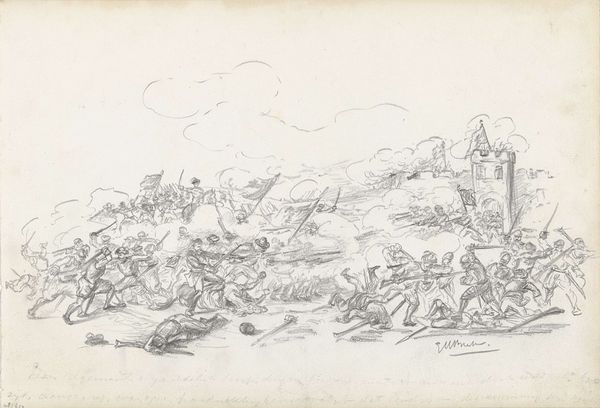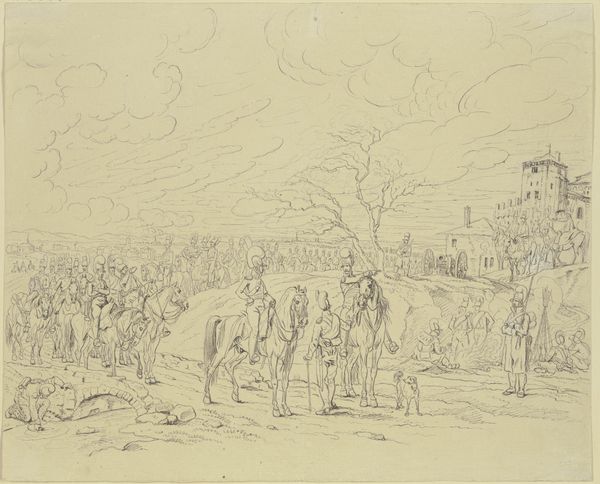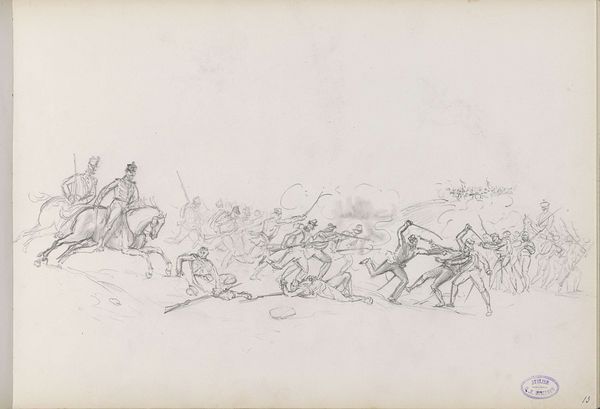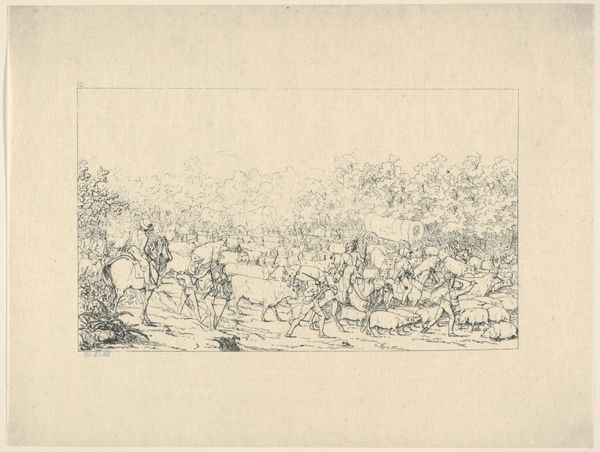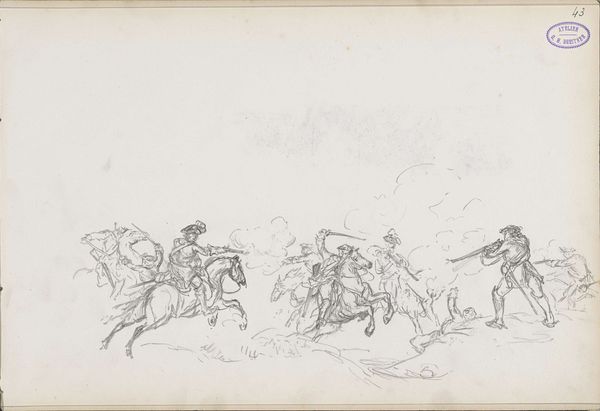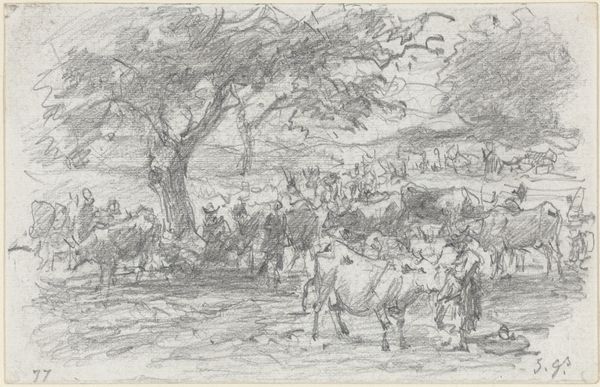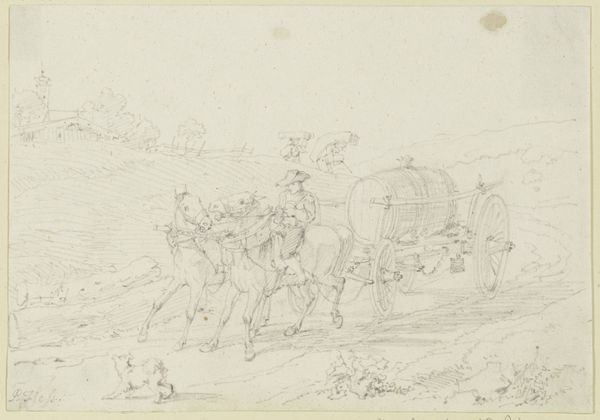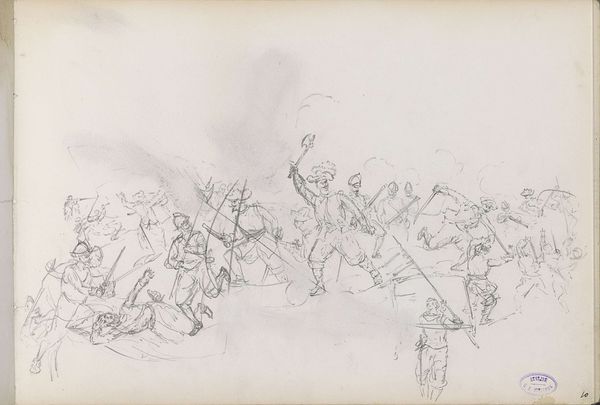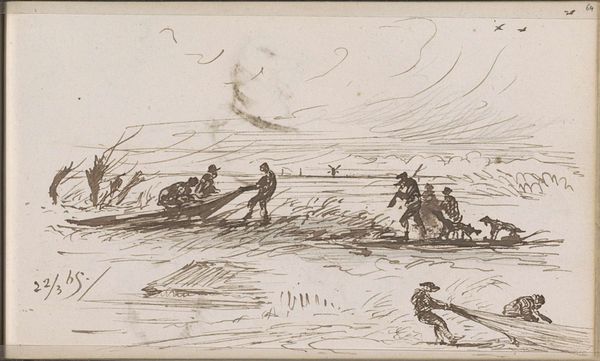
drawing, print, ink
#
drawing
#
ink drawing
# print
#
landscape
#
ink
#
genre-painting
Dimensions: 4 3/8 x 6 in. (11.1 x 15.2 cm)
Copyright: Public Domain
Curator: This ink drawing, dating sometime between 1822 and 1885, is titled "The Hunt" by Rodolphe Bresdin. It is currently held here at the Met. What's your initial take? Editor: Energy. I'm struck by the frenetic energy captured in these simple lines, the horses leaping, the figures bent forward. There’s a real sense of motion and the pursuit of… something. Curator: Absolutely. The material and technique enhance this, don’t you think? The immediacy of the ink, the sketchy quality, it lends itself to a sense of raw, unfiltered action. Consider the role of the line itself; see how it both defines the forms and simultaneously dissolves them into pure movement. The ink almost becomes the physical manifestation of the hunt itself. Editor: It is compelling. And when thinking about the "hunt", what's being hunted in the context of this era becomes important. Hunting as an aristocratic pastime, a demonstration of power, embedded in social structures, right? Was Bresdin commenting on those power structures? Who benefits and at what cost? Curator: Indeed. We can analyze the labor dynamics present—the unseen hands that contribute to this leisure. And how hunting might perpetuate certain ideals and suppress others, how certain lives matter more than others within this social setting. The pursuit of 'game' reflects a wider political game. Editor: These hunts become stages for societal performance. Think of the materials too-- the costs associated with horses, tack, and garb—they signal access and privilege. How does that access translate to larger economic structures of class division, control over land? Curator: Precisely. Furthermore, Bresdin's choice to work primarily in ink and print, rather than say, oils on a large canvas, introduces questions about accessibility. Prints democratize art, in a way, allowing for broader circulation. Editor: Though, still, consider the consumer. Were these images intended to circulate only amongst a wealthy clientele despite the media, reifying existing inequalities? It prompts us to dig deeper, analyze who held the economic and social capital, and consider the means of the printing. Curator: So true! The interplay between medium, social class, and ideology. Bresdin’s rendering, in a way, invites that critique. So it is! The artwork and dialogue has definitely widened the horizons! Editor: It indeed does! By bringing art to light with an objective to explore!
Comments
No comments
Be the first to comment and join the conversation on the ultimate creative platform.

